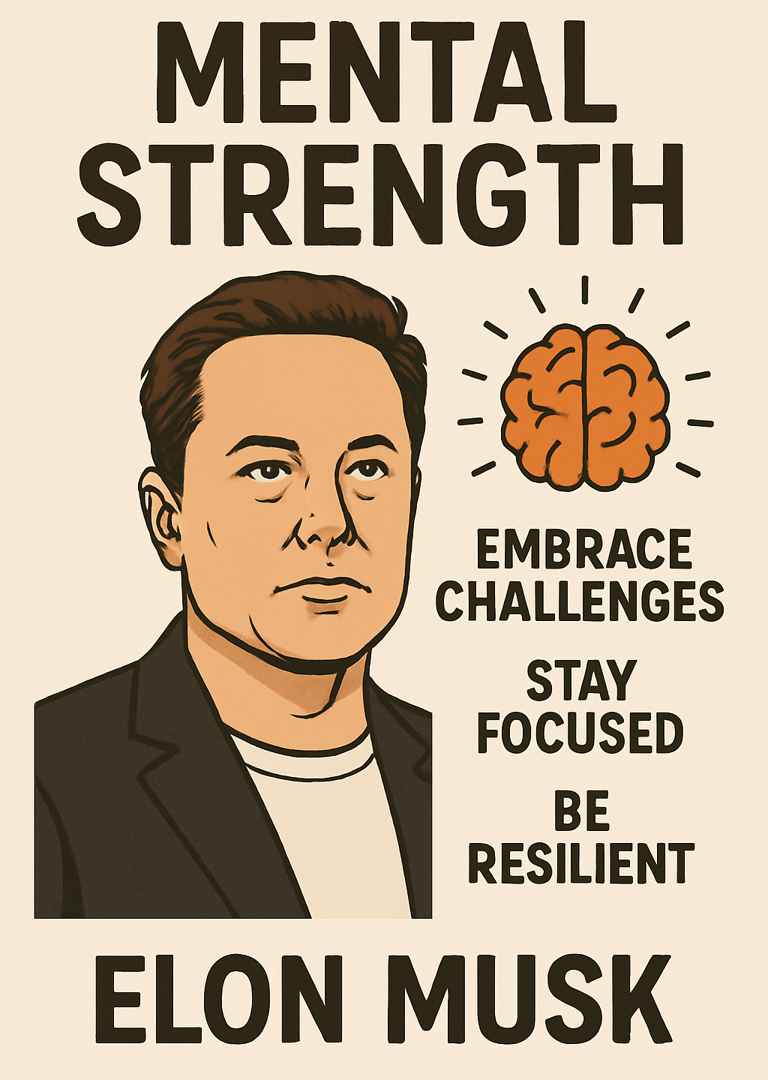Elon Musk’s Mental Models
Elon Musk’s Mental Models: How He Thinks Differently
6/23/20254 min read


Elon Musk’s Mental Models: How He Thinks Differently
Elon Musk—visionary entrepreneur, CEO of Tesla and SpaceX, and founder of Neuralink and X (formerly Twitter)—is often hailed as one of the most innovative minds of our time. His ability to disrupt multiple industries, from electric cars and reusable rockets to brain-computer interfaces and social media platforms, has not only shocked the world but also offered a blueprint for thinking differently. What is the secret behind Musk’s unparalleled ability to solve problems that most people consider impossible? The answer lies in his use of powerful mental models.
Mental models are frameworks or thought processes that help individuals make decisions, understand the world, and solve problems. While most people default to conventional thinking and established norms, Musk consistently breaks away from these patterns. His approach is deeply rooted in a handful of mental models that allow him to view problems from fresh angles and design solutions that others overlook.
In this comprehensive exploration, we delve into Elon Musk's core mental models, unpack how he applies them in real-life ventures, and most importantly, discuss how you can use these principles to revolutionize your own thinking, career, or business.
1. First Principles Thinking: Breaking Problems Down to Their Core
What Is It?First Principles Thinking is about boiling things down to the most fundamental truths and reasoning up from there. Instead of solving problems based on analogy ("this is how it’s always done"), Musk dissects every problem to its essential elements.
How Musk Uses It:
When developing SpaceX, Musk faced the problem that rockets were prohibitively expensive. Traditional thinking would have led him to try to buy rockets more cheaply from suppliers. But Musk applied first principles thinking:
What is a rocket made of? Aluminum, titanium, copper, carbon fiber.
What is the cost of these materials on the open market? Roughly 2% of the price of a finished rocket.
Why is there such a markup? Because traditional manufacturers operate with waste, inefficiency, and custom-made parts.
His conclusion? Build rockets from scratch in-house. This led to the development of reusable rockets—SpaceX’s ultimate innovation.
2. The 80/20 Rule (Pareto Principle): Focus on What Truly Matters
What Is It?The Pareto Principle suggests that 80% of outcomes result from 20% of inputs. Musk ruthlessly applies this model to maximize impact and efficiency.
How Musk Uses It:
At Tesla, he concentrated on reducing battery costs—the single most expensive part of electric vehicles—instead of focusing on minor design details.
At SpaceX, reusability of rockets became the focus, because it would lead to the biggest cost reductions.
3. Rapid Iteration and Feedback Loops: Fail Fast, Learn Faster
What Is It?Musk values speed over perfection. His philosophy: Test ideas fast, gather feedback, learn quickly, and improve continuously.
How Musk Uses It:
SpaceX’s early rocket launches failed repeatedly. Each failure produced vital data, speeding up development.
Tesla updates car software remotely, iterating post-sale, improving customer experience and product value.
4. Long-Term Thinking: Playing the Decade (or Century) Game
What Is It?Most people think in quarters or years. Musk thinks in decades—even centuries.
How Musk Uses It:
Tesla’s mission is to accelerate sustainable energy, not just to sell cars.
SpaceX's mission is to make humanity a multi-planetary species.
Neuralink envisions symbiosis between AI and humans, which could take decades to realize.
5. Physics-Based Reasoning: Avoiding False Analogies
What Is It?While most of the world solves problems by analogy ("we’ve always done it this way"), Musk prefers reasoning based on fundamental laws—physics, economics, human behavior.
How Musk Uses It:
Auto industry consensus: EVs are niche, limited, impractical.
Musk’s view: Electric motors are fundamentally more efficient than combustion engines. Therefore, EVs must win, long-term.
6. The "Hard Work" Multiplier: Extreme Effort Compounds Results
What Is It?Musk openly says that intelligence helps, but a superhuman work ethic amplifies results dramatically. Outworking others allows you to out-learn and out-iterate.
How Musk Uses It:
Regularly works 80-100 hour weeks.
Slept on Tesla’s factory floor during production crises.
Personally dives into engineering details others delegate.
Bonus Mental Models Elon Musk Quietly Uses
Vertical Integration
Instead of outsourcing production, Musk insists Tesla and SpaceX build key components themselves. This ensures control over quality, cost, and innovation speed. This "control the stack" approach is rare in modern business but gives Musk an edge.
Moonshot Thinking
Musk doesn’t chase small improvements. He prefers "10X thinking"—pursuing breakthroughs that can improve outcomes tenfold or more.
Example: Colonizing Mars is not a small step—it’s an entirely new chapter for humanity.
Risk Tolerance
Musk routinely bets his fortune (and sleep) on his ventures, unlike typical corporate leaders who minimize personal risk. He sees risk-taking as essential to breakthrough progress.
Information Transfer Efficiency
Musk eliminates middle management layers. Engineers report directly to him. This speeds decision-making and keeps information unfiltered..
Conclusion: Why Thinking Like Musk Matters More Than Ever
In a world where disruption is constant—AI, climate change, biotech, space exploration—the ability to think differently is the ultimate advantage. Elon Musk’s mental models allow him to do what no one else dares, and his companies shape the future because of this mindset.
But these principles are not reserved for billionaires or rocket scientists. Anyone—entrepreneurs, students, corporate leaders—can adopt them. You can question assumptions, focus on impact, iterate quickly, dream long-term, and outwork rivals.
The future will belong to those who think boldly, take risks, and build relentlessly.